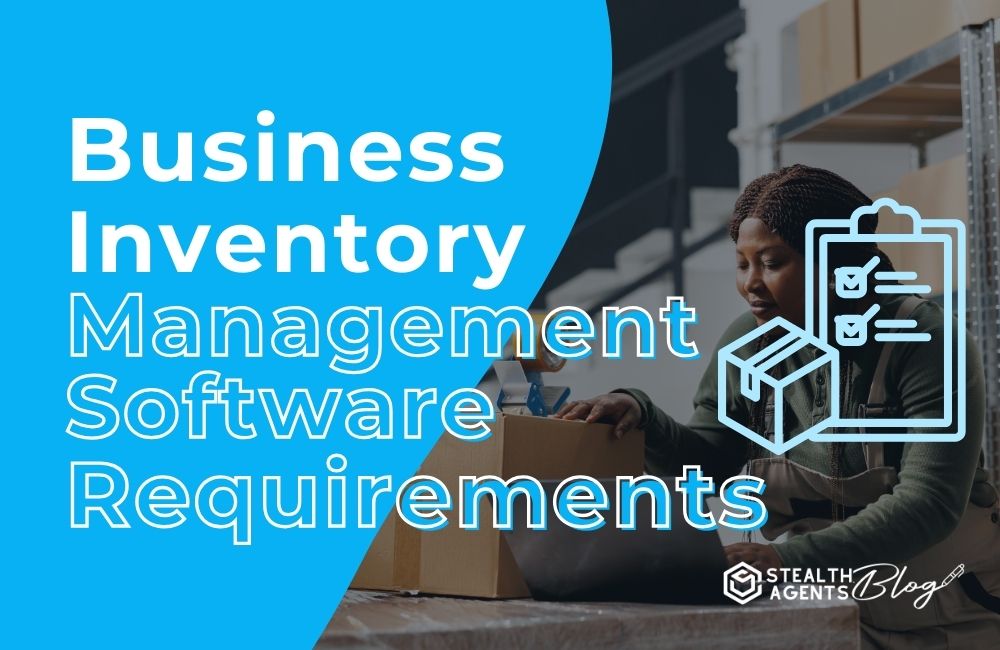Essential Requirements for Business Inventory Management Software
Navigating the ebb and flow of inventory is a central task for businesses of all stripes. From a local mom-and-pop shop to sprawling multinational corporations, knowing what’s on hand, when to order, and when stock’s about to expire can make or break operations. In the digital age, this dance is made easier with inventory management software. But not all programs are created equal. Just like every business is unique, inventory management software should be tailored to meet specific needs and complexities.
In this post, we’re taking a deep dive into the vital elements of good inventory management software and how it can overhaul your business for the better. Whether you’re considering a change from manual systems or looking to upgrade your existing software, understanding what to look for in an inventory management tool is crucial.
Understanding Inventory Management Software
Before we discuss the essential requirements, it’s important to understand what inventory management software is and why it’s so important.
Inventory management software is a digital tool designed to help businesses track goods across the entire supply chain—from purchasing to production to sale. It plays a pivotal role in optimizing the storage and flow of goods. By recording all inventory and sales, the software helps businesses predict demand, ensure adequate stock levels, and even monitor the health of goods that could spoil or expire.
This kind of digital handiness is more than just a fancy way to do bookkeeping. It’s a keystone in the archway of operations. It streamlines the whole process, making businesses more agile and informed.
Key Features of Inventory Management Software
When assessing different inventory management solutions, keep an eye out for these key features:
Inventory Tracking
This is the bread and butter of any good inventory management software. Businesses need a system that can track items in real-time, across multiple locations if necessary. The best software provides detailed information on every unit, such as cost, weight, and dimensions, allowing businesses to make precise decisions on stock management.
Order Management
An ideal system not only tracks the goods but also manages the movement of stock, automating reordering processes by alerting you when inventory levels reach a certain threshold. Some advanced systems can even suggest reorder quantities based on historical data and sales trends.
Reporting and Analytics
Data is the currency of the modern business, and inventory management software should be a data-rich environment. Robust reporting tools give insights into sales patterns, profitability, and stock-turn ratios. This helps in making informed decisions to optimize inventory levels while reducing carrying costs and preventing stockouts.
Integration Capabilities
To truly support a business, an inventory management system should integrate seamlessly with other software, such as accounting, ERP, or CRM systems. This ensures that all organizational data is up to date and enables the business to run like a well-oiled machine.
*advertisement*
Tired & Overwhelmed With Administrative Tasks?
Hire A Top 1% Virtual Assistant From Stealth Agents!

Sign Up Below & Hire A Top 1% Virtual Assistant
Rated 4.7 Stars Serving Over 2,000+ Customers.
Hire Top 1% Virtual Assistants For $10-$15 Per Hour
Ask About Our 14 Day Trial!
*advertisement*
Factors to Consider When Choosing Software
Choosing the right inventory management software is a bit like choosing a car. Your business has a unique set of needs and circumstances that the software must accommodate. Here are some factors to consider:
Scalability
Is the software able to grow as your business does? You don’t want to be switching inventory systems every few years —it’s disruptive and costly. Choose a system that can scale up to match your projected business growth.
User-Friendliness
The mystery of user manuals has driven many users to the brink. Ensure the software is user-friendly and requires minimal training for regular operation. Employees should be able to learn the system quickly and not shy away from using it.
Customization Options
Each business has its own workflows and unique set of data. Having the ability to customize fields, reports, and integrations, makes the management software fit like a bespoke suit.
Cost-Effectiveness
The software might be brilliant, but can your business afford it? Weigh the cost of the software against the benefits it provides. Consider potential ROI, such as decreased holding costs and increased sales due to better stock availability.
Benefits of Implementing the Right Inventory Management Software
The right inventory management system can transform how your business operates. Here are some of the benefits you can expect:
Improved Efficiency
Automation features mean fewer human errors, faster order processing, and streamlined operations. This allows staff to focus on more pressing tasks that can’t be automated.
Reduced Costs
By optimizing stock levels and automating reorders, you can significantly reduce costs associated with overstocking or stockouts. Accurate tracking and reporting also help identify areas of waste and overage.
Enhanced Decision-Making
Access to real-time data empowers businesses to make informed decisions about purchasing orders, pricing, and sales forecasting. It’s like having a crystal ball that tells you what item you’re about to run out of, before you do.
Case Studies or Examples
Real-world scenarios demonstrate the software in action, and the tangible benefits it brings. Consider cases where businesses have significantly increased their accuracy and efficiency, or have effortlessly adapted the software to new lines of business.
Conclusion
Inventory management might not be the most glamorous aspect of running a business, but it’s certainly one of the most critical. The right software puts you in the driver’s seat, allowing you to make decisions that are always well-informed, never haphazard. It’s the difference between a business that runs by the seat of its pants and one that sails the winds of data with all the confidence in the world.
In sum, choosing the right inventory management software boils down to understanding the needs of your business and finding a solution that best aligns with those specific needs. Take your time, do your research, and remember that this software isn’t just a tool—it’s a business partner that will be by your side every step of the way.










